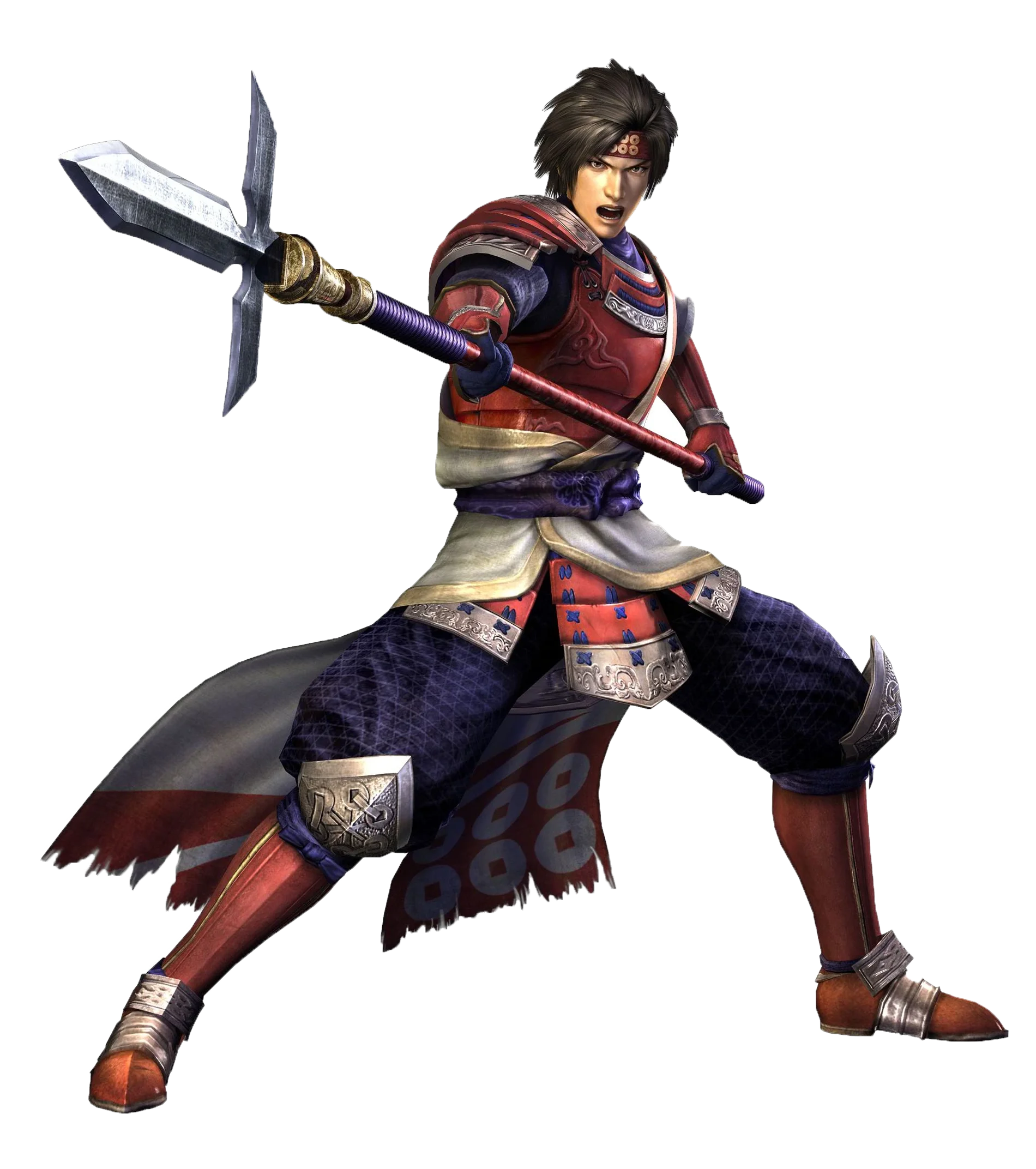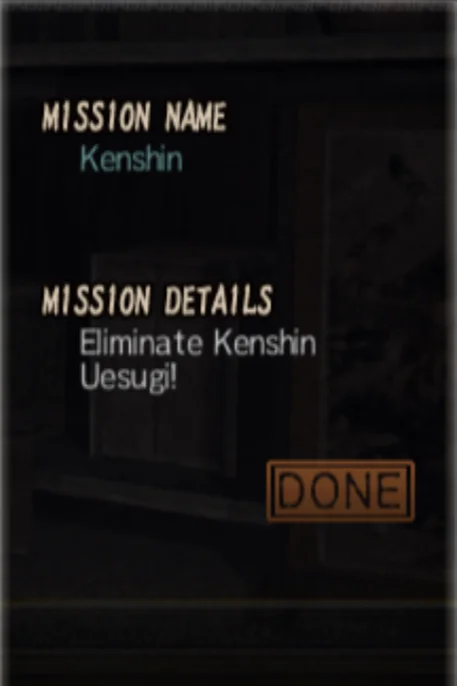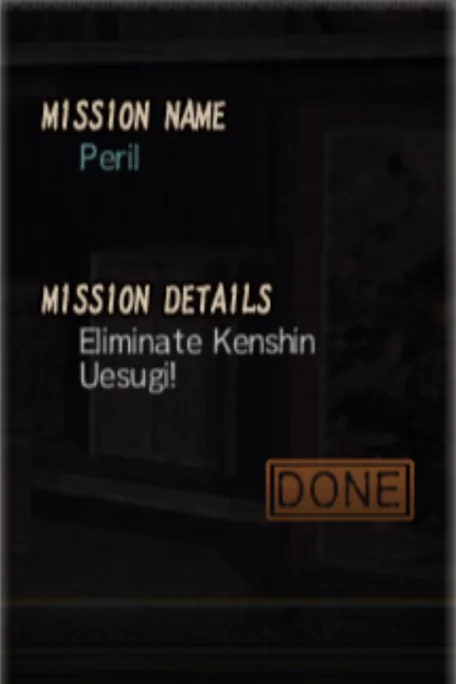
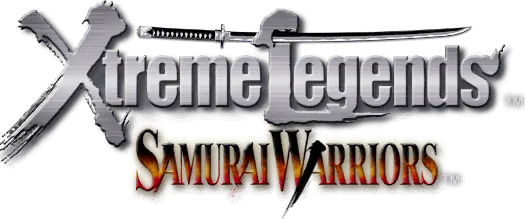
Samurai Warriors took me nearly 3 months despite requiring less than half the playtime of Dynasty Warriors 3...
I'm so glad to finally be done with this one.
Despite being the 1st entry in the 2nd longest running musou series, this was a super rough start.
It may be a bit too early to say for certain, but this could very well end up being my most disliked musou out of all of the Koei published titles.
That may come off as a bit of an exaggeration- how could the start of such a beloved series be that bad? But there was truly almost nothing I enjoyed here.
The largest overarching problem, as well as the defining feature of Samurai Warriors, is the mission system.
These are inescapable: level progression is determined by their completion, several extra features are effectively locked behind them, and a majority of the 100% completion requirements involve them in some way.
Missions are infused into every aspect of this game, and the huge emphasis on that system destroys the pacing of stages and entirely negates most strategy elements.
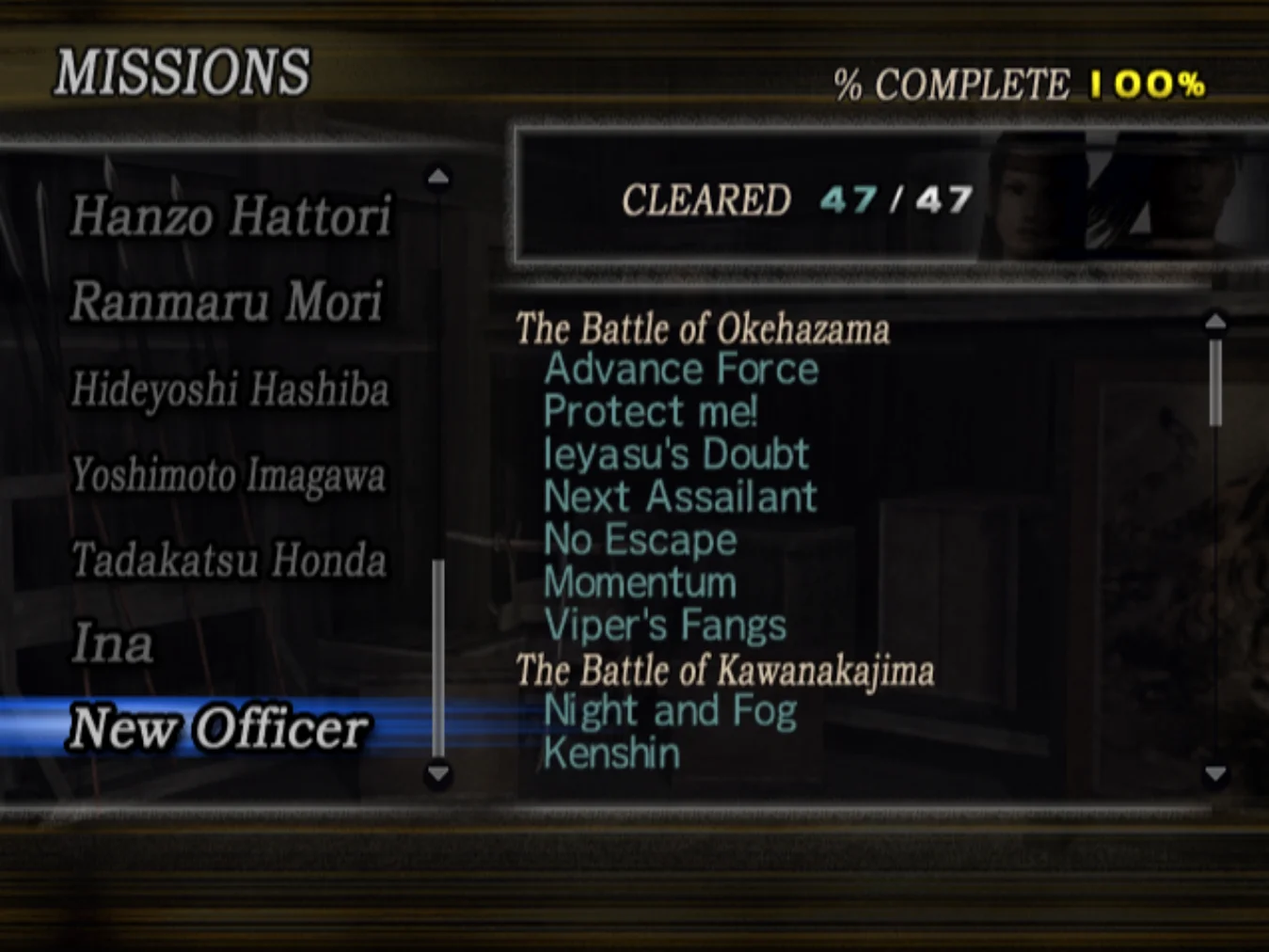
This is a common problem, if I were to list out every mission like this it would make up around 25% of the entire mission list.
Even missions that aren't quite this bad often follow a formula; I would consider most missions to fall under 1 of 3 categories: stage clear objectives, player guidance, or alternate routes. Stage clear missions are self-explanatory, missions which involve objectives that are already directly stated as required to finish the stage normally, however these missions make it so that the player can't complete the stage until explicitly told to without failing the associated mission. Stages can of course still be finished without completing any missions, so these aren't required, but there's rarely a reason not to do them since you'll be completing the same objective either way, but because of how the system works, these filler missions often result in extra unnecessary waiting mid-stage. Something I've yet to mention is that missions don't just suddenly appear as soon as conditions to trigger them are met, everything that happens in a level is reported on a history log; an officer is killed, the player reaches a K.O. milestone, a mission is started or completed, all of it is reported on this log. Not an issue at all inherently, having a history to check previous events is very helpful, the problem is that the tide of battle is dependent on events being logged, and that logging doesn't occur until a text prompt appears in battle.


The next set of common missions: player guidance missions, are probably the most common type, and arguably the previous category fits within this set, although I would consider anything that directly guides the player on the intended progression path to fall under this umbrella. This category at least has a reason to exist, especially for new players, but it's also incredibly restrictive and is the main culprit for the lack of player strategy in this title. Succeeding missions greatly increases the morale of your army, and failing missions conversely lowers army morale; morale is the most important resource in winning a battle, thus completing missions as they appear is highly encouraged and on higher difficulties is a near necessity. Ignoring these prompted missions in order to form your own strategy is almost never worth it considering the cost in morale, the most effective route is to always go exactly where the missions tell you to go, exactly when they tell you. These ironically punish experienced players more than anything, they may assist new players without much knowledge of the genre, but they also far too heavily restrict strategic freedom in a genre defined by such freedom! These are probably the most harmful type of missions to the experience as a whole, which is a shame because if implemented better they could genuinely be helpful to new players, but so much weight is put behind them that instead they ruin all strategic elements common to musous.
Missions that indicate alternate routes are definitely the least common of the 3 major types, only a handful of stages have these, usually 1 per Story Mode campaign, but they're still common enough to be worth mentioning. I don't really have any major issues with this category, they're not overused, generally executed well enough, and some of my favorite missions even fall under this category; at their worst they're maybe a bit cryptic to trigger, but that's certainly not a symptom of the whole group. Most of these are reserved for Story Mode route splits, or on occasion for secret endings, they almost always serve an external purpose.
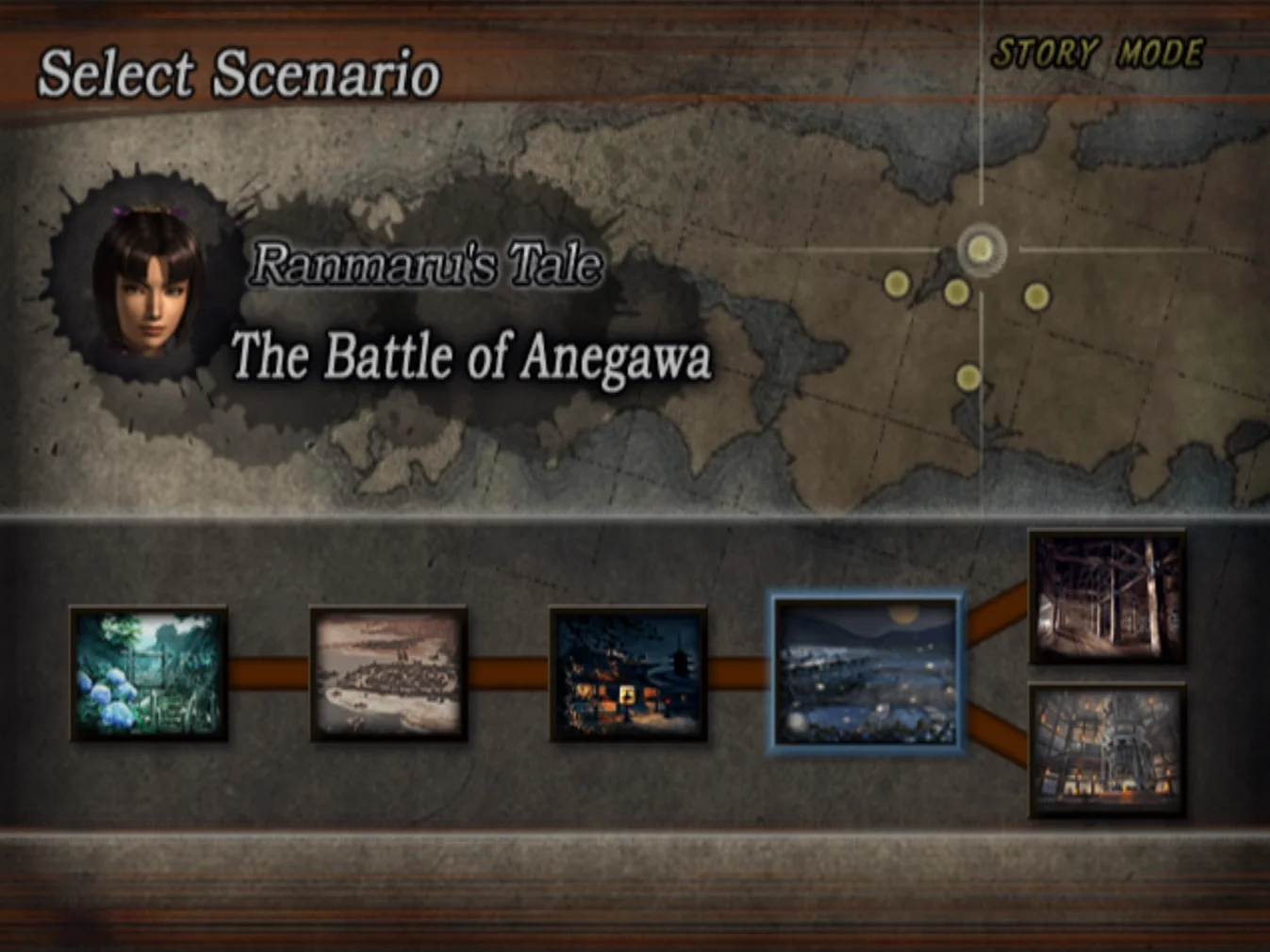
As defining as the mission system is, it's not the only aspect of Samurai Warriors, there are of course the typical musou mechanics, and a few extra somewhat unique features. Combat is about as average as a musou can get, it's not bad, but nothing is improved upon from earlier entries; it's clear their focus lied elsewhere. Characters are equally average, possibly even slightly below average overall, there aren't many characters that stand out as especially amazing, but there also aren't many who are exceptionally terrible. An alright roster I suppose, maybe a bit small at only 19 characters including the 4 added in Xtreme Legends (arguably 22 including New Officers), but considering this is the 1st title in a spinoff series I think that's acceptable.

Samurai Warriors has a few extra modes as well, they're all just small side diversions, nothing outstanding, but the most interesting in my opinion is New Officer Mode.
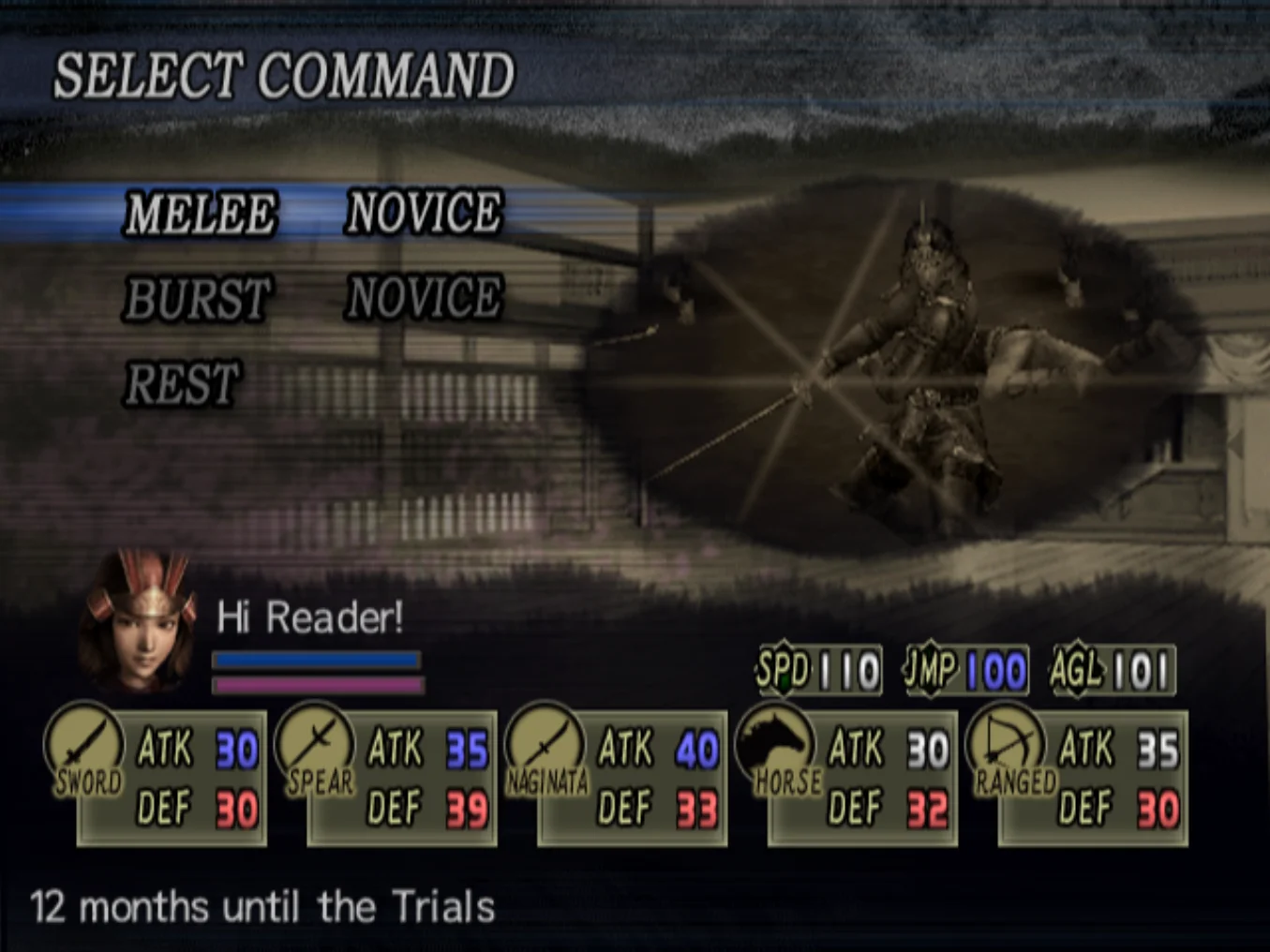
Training in New Officer Mode consists of clearing small challenges based on different stats, and within that mode those challenges are acceptable, but they get reused for a 2nd extra mode: Challenge Mode. Challenge Mode is just the exact same training challenges as in New Officer Mode, reused but divorced from the context of a raising simulator. I can't deny that Challenge Mode has never been very good in any previous musous either, but this is the most worthless mode in a game filled with mediocre side modes.
Survival Mode is a tiny bit better, albeit not by much; this mode actually consists of 3 smaller modes: High Tower, Deep Abyss, and Gold Rush. Gold Rush is a mode that was added in Samurai Warriors: Xtreme Legends, it puts you on a single floor and asks you to complete a series of tasks under a strict time limit to collect gold that can be used to purchase item upgrades. It's not a terrible mode, it can be pretty fun on your first run, but it can get old very quickly; there's a bit of RNG dependency on what order each event occurs in, but upon repeat playthroughs no new events are added, so each subsequent run is about the same. Gold Rush is a really fun mode the first time you complete it, but it's clear that you're intended to replay it several times to build up gold, and the lack of difference between each run causes it to get old way too fast to be fun long-term. High Tower and Deep Abyss are almost exactly the same as each other, ascend a series of floors endlessly until you die or give up. These are fine, a simple concept that's hard to mess up, the problem is that they take place entirely indoors.
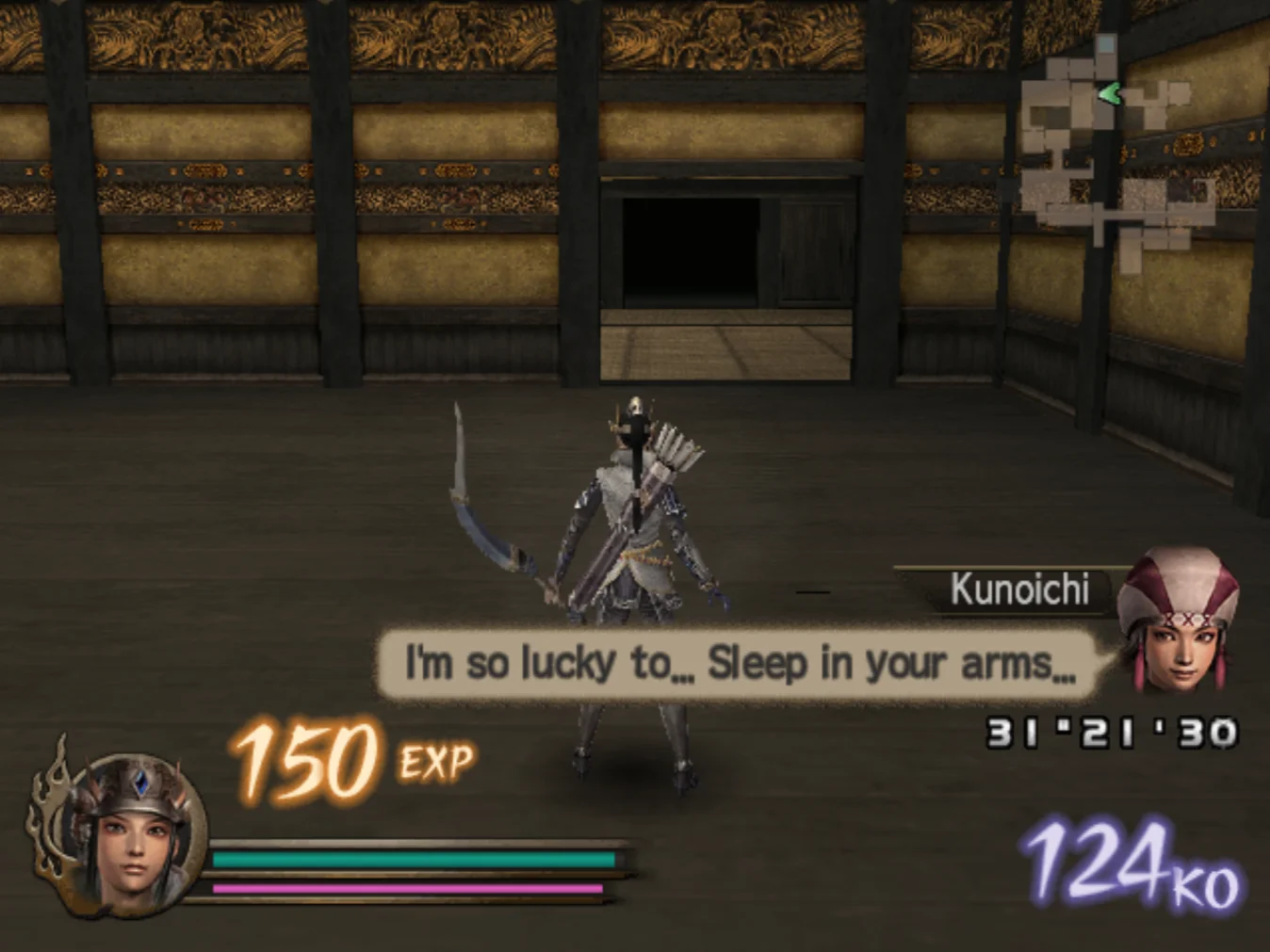
Speaking of dull looking stages, Samurai Warriors is the most exhausting musou to look at I have ever played. This game was definitely attempting to have a slightly more 'realistic' aesthetic compared to Dynasty Warriors, and like a lot of mid-2000s games going for that look, the method they went with to achieve that goal was to desaturate all colors as much as possible. So much of this game is brown or grey, environments especially suffer from this lack of any vibrancy and it makes everything come off as so forgettable and bland to look at.
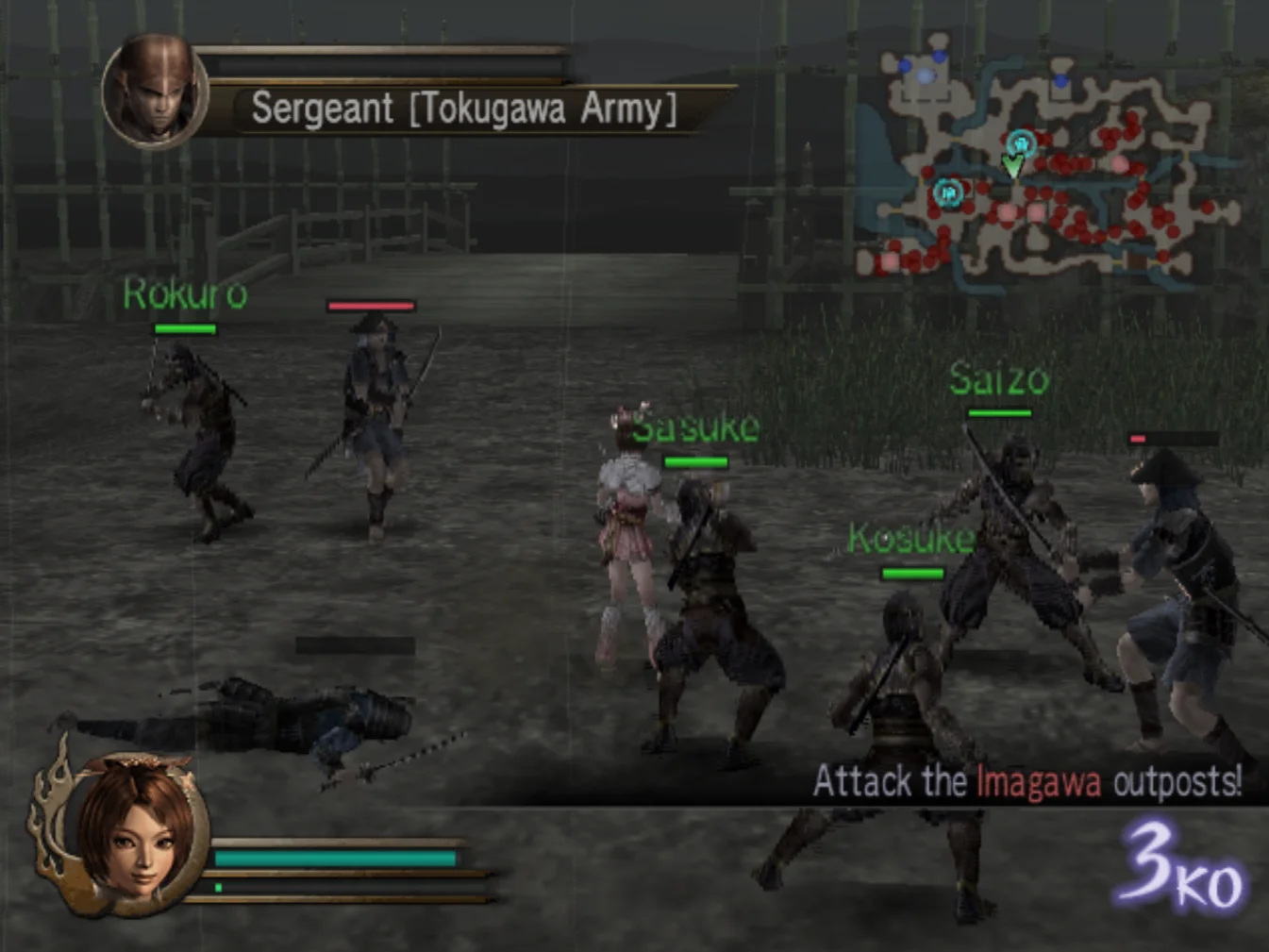
Obviously, I don't like Samurai Warriors very much, I have much more negative to say than positive and it probably will remain as one of my most hated musous for a very long time. However, I am very much looking forward to playing Samurai Warriors 2; with some major improvements there could actually be a lot to love in a sequel, and I've generally heard SW2 referred to as one of the best in the entire genre. I won't be moving to Samurai Warriors 2 right away though, so I won't find out if the sequel truly is that great right away. After this mess of a game I definitely need a break from the Samurai Warriors lineup, but once I do eventually get there I trust that it'll at the very least be an improvement over this one.
